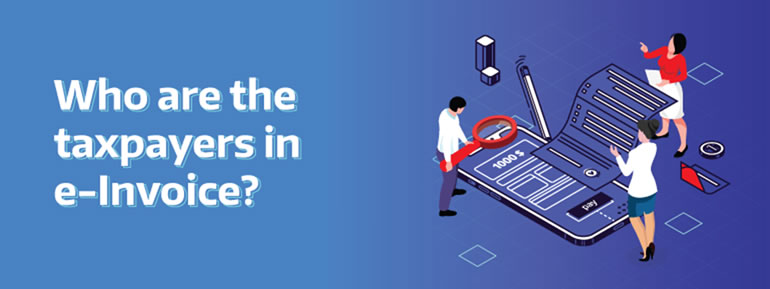
Who are the taxpayers in e-Invoice?
Who are the taxpayers in e-Invoice?
According to LHDN, the coming e-Invoice will be applied to all taxpayers undertaking commercial activities in Malaysia. But what exactly is a taxpayer?
In Malaysia, a taxpayer is an individual or entity that is generating income that are subject to pay taxes to the government. While tax paid to government are commonly use as government income, in order to manage and run the country and giving back to the people, such as funding for government services, including infrastructure development, healthcare, education, defense or welfare.
According to Income Tax Act 1967 (Akta Cukai Pendapatan 1967), a taxpayer is any person chargeable to income tax under the provisions of this Act. This broad definition encompasses individuals, corporations, businesses, and other entities that are subject to income tax in Malaysia.
This means taxpayers is an entity which comprises of individuals, businesses, and other organizations that generate taxable income in Malaysia, profit or non-profit, and by referencing to the e-invoicing guide, e-Invoice will be applied to almost every entity except those exempted. The taxpayers defined in e-Invoice are:
- Association
- Body of persons
- Branch
- Business trush
- Co-operative societies
- Corporations
- LLP
- Partnership
- Property trush fund
- Property trush
- REIT
- REpresentative office and regional office
- Trust body
- Unit trust
What taxpayers have to take note on and how to implement e-Invoice?
It's important to note that tax laws and regulations in Malaysia can change over time, either is an update of the outdated regulations or changing in political environment, and the specific requirements and tax rates may vary depending on the taxpayer's circumstances and the latest government policies, it is advisable to refer to the official website of the Inland Revenue Board of Malaysia (IRBM, Lembaga Hasil Dalam Negeri Malaysia or LHDN) for the most up-to-date information on taxation in Malaysia, or to opt for solution which compliant to local taxation requirement such as AutoCount Accounting and Cloud Accounting.
2 ways of generating LHDN e-Invoice
And for e-Invoice, IRBM has developed two (2) distinct e-Invoice transmission mechanisms which is MyInvois Portal hosted by IRBM, and Application Programming Interface (API), and AutoCount has connected to IRBM by API and will streamline and automates the whole invoicing process. By accessing e-Invoice features, share, verify and receive e-Invoice can all be done within the solution, without the need of accessing the portal to get the job done, stay tune or follow our Facebook Page to find out more and stay updated. Facebook: www.facebook.com/autocountsoftware